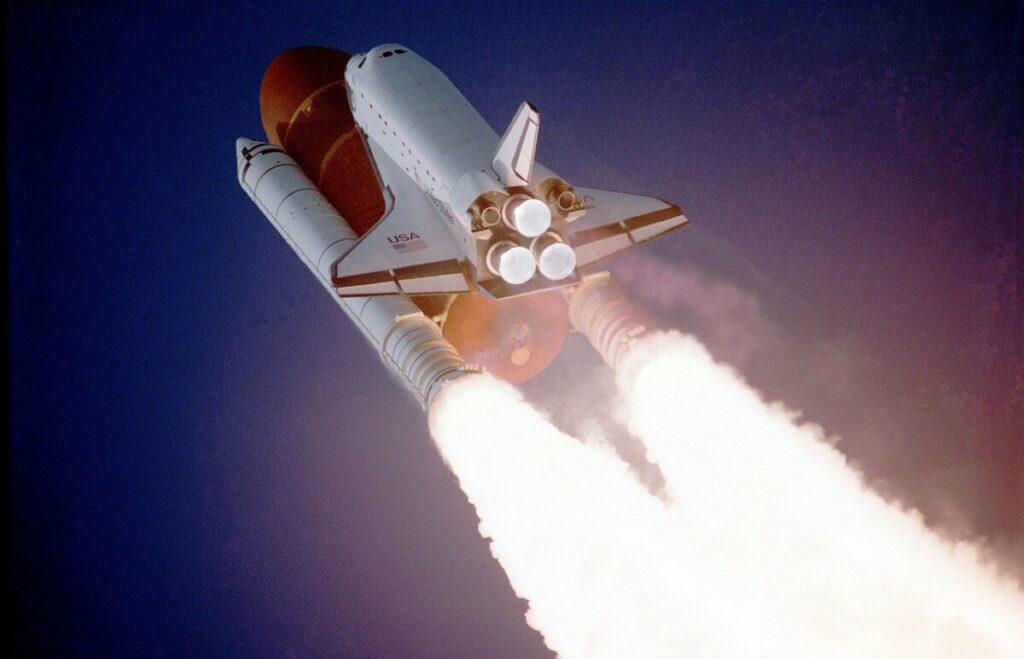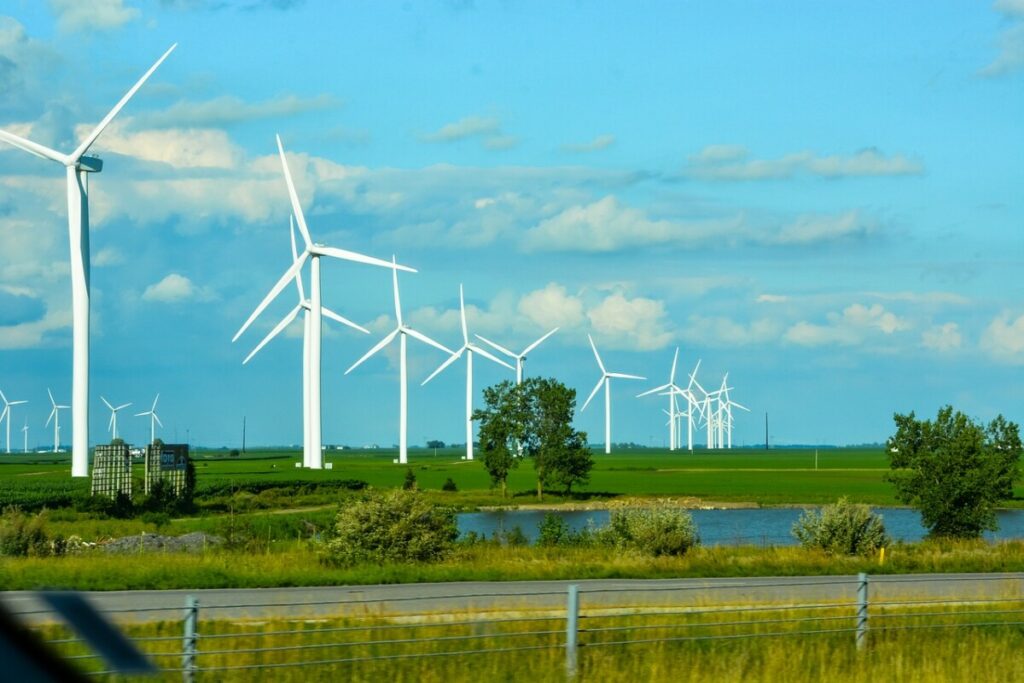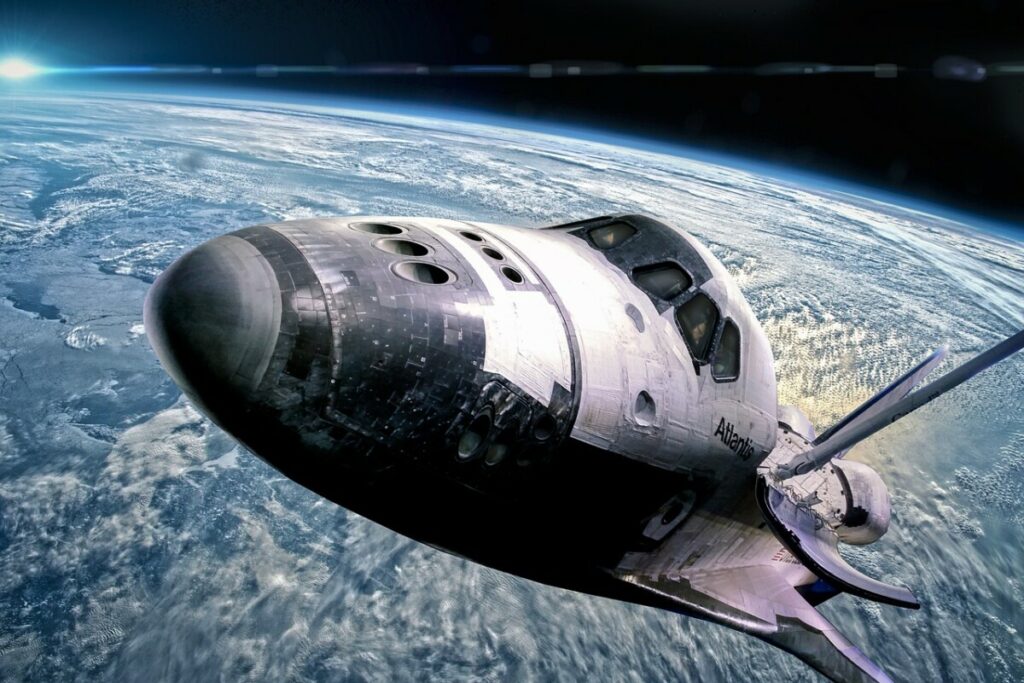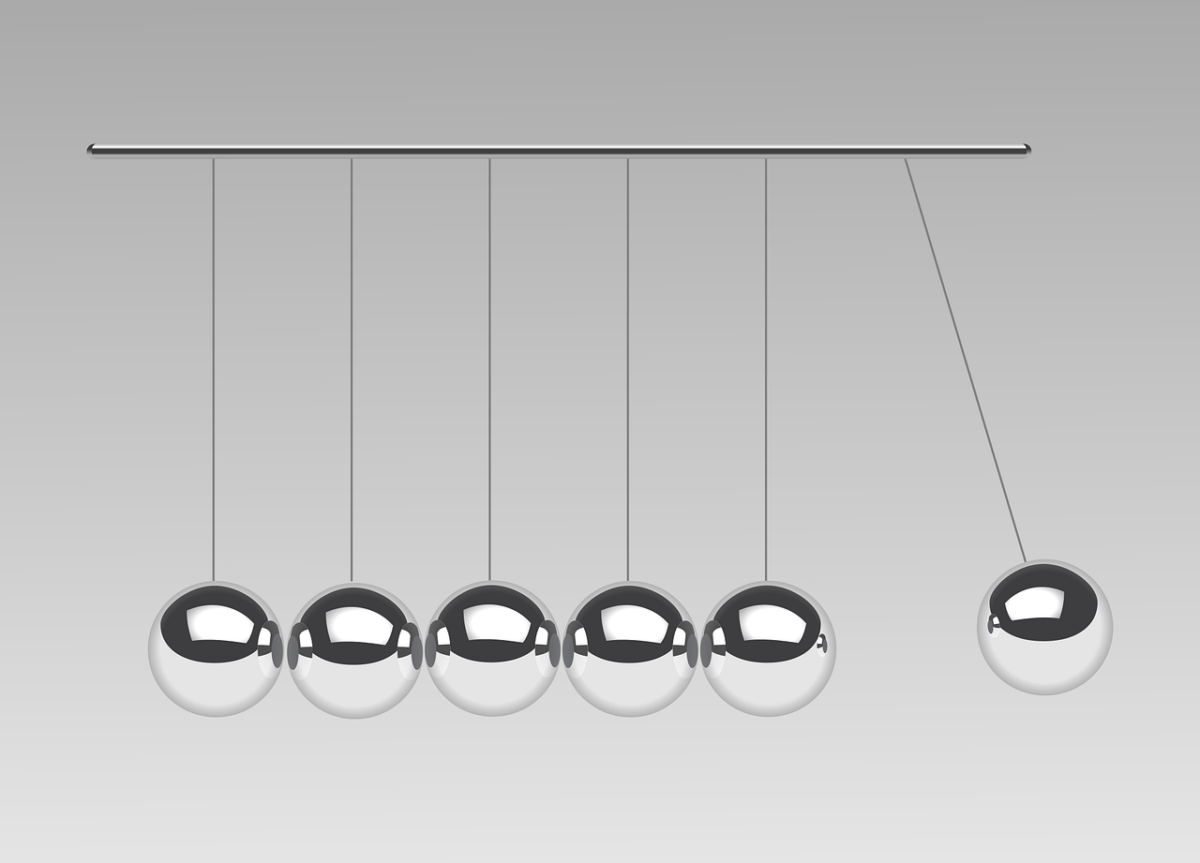Mechanical Energy Examples
Firstly, mechanical energy is a fundamental concept that plays a crucial role in various forms of energy transfer and work. Also defined as the sum of kinetic and potential energies, it manifests in numerous examples, demonstrating its importance in everyday life and various technological applications. So in this article, mechanical energy examples will be thoroughly examined, providing a deeper understanding of this essential form of energy.
Introduction to Mechanical Energy
Mechanical energy, a key concept in physics, is the energy associated with the motion and position of an object. Thus it is present in various forms, including kinetic energy (energy of motion) and potential energy (energy of position).
In fact understanding mechanical energy examples helps illustrate how energy is conserved and transformed in different systems. From wind turbines to roller coaster cars, the applications are vast and varied.
Types of Mechanical Energy

Kinetic Energy
Kinetic energy is the energy of a moving object. It depends on the mass of the object and its velocity. The formula for kinetic energy is:
KE=12mv2KE = \frac{1}{2}mv^2KE=21mv2where mmm is the mass of the object and vvv is its velocity.
Potential Energy
Potential energy is the stored energy of an object due to its position relative to other objects. There are different forms of potential energy, including gravitational potential energy and elastic potential energy.
Gravitational Potential Energy
Gravitational potential energy is the energy an object possesses because of its position in a gravitational field. The formula for gravitational potential energy is:
PE=mghPE = mghPE=mghwhere mmm is the mass of the object, ggg is the acceleration due to gravity, and hhh is the height above a reference point.
Elastic Potential Energy
Elastic potential energy is stored in objects that can be stretched or compressed, such as rubber bands or springs. The energy stored in a compressed spring is an example of this type of potential energy.
Examples of Mechanical Energy
Wind Turbines
Wind turbines are excellent mechanical energy examples, converting wind energy into electrical energy.
The kinetic energy of moving air (wind) is transformed into mechanical energy as the blades of the turbine rotate. This mechanical energy is then converted into electrical energy using a generator.
Roller Coaster Car
A roller coaster car is a classic example that illustrates both kinetic and potential energy. At the top of a hill, the car has maximum potential energy due to its height.
Therefore as it descends, this potential energy is converted into kinetic energy, propelling the car forward.
Throughout the ride, energy is constantly transformed between kinetic and potential forms, demonstrating the law of conservation of energy.
Swinging Pendulum
A swinging pendulum is another example of mechanical energy. At its highest point, the pendulum has maximum potential energy. As it swings downward, this energy is converted into kinetic energy.
At the lowest point of the swing, the kinetic energy is at its greatest, and then it converts back to potential energy as it swings upward.
Mechanical Energy in Everyday Life

Mechanical energy examples are prevalent in everyday life. Common instances include:
- Bowling Ball: When a bowling ball is held at a certain height, it has gravitational potential energy. When released, this energy converts into kinetic energy as it rolls down the lane.
- Compressed Spring: A compressed spring stores elastic potential energy, which is released when the spring expands, performing work.
- Moving Vehicle: A moving vehicle exemplifies kinetic energy, with its energy depending on its mass and speed.
Mechanical energy examples demonstrate the various ways energy is utilized and conserved in real-world scenarios.
From the mechanical energy of a system in a wind turbine to the potential energy of an object in a roller coaster, these examples highlight the fundamental principles governing energy transformations.
Real-Life Applications of Mechanical Energy
Mechanical energy examples are abundant in real life, showcasing how this fundamental concept underpins various technologies and natural phenomena.
Each application illustrates the principles of energy conservation and transformation, making mechanical energy an integral part of our daily lives and the functioning of different systems.
Wind Turbines
Wind turbines harness the kinetic energy of wind, a form of mechanical energy, to generate electricity. As the wind blows, it causes the turbine blades to rotate.
This rotational kinetic energy is then converted into electrical energy through a generator. This process highlights how mechanical energy examples in renewable energy systems contribute to sustainable power generation.
Wrecking Ball
A wrecking ball demonstrates gravitational potential energy and kinetic energy. When raised to a height, the ball stores gravitational potential energy.
Upon release, this energy is transformed into kinetic energy as the ball swings downward, impacting and demolishing structures.
This conversion exemplifies the direct application of mechanical energy in construction and demolition.
Electric Motor
An electric motor is another excellent mechanical energy example. It converts electrical energy into mechanical energy through electromagnetic interactions.
The motor’s rotating components perform work, driving various machines and devices. This transformation showcases the versatility of mechanical energy in powering tools, appliances, and industrial machinery.
The Law of Conservation of Mechanical Energy

The law of conservation of mechanical energy states that in a closed system, free from non-conservative forces such as friction and air resistance, the total mechanical energy remains constant.
This principle is essential for understanding mechanical energy examples and their practical applications.
Roller Coaster Car
In a frictionless environment, the mechanical energy of a roller coaster car remains constant. As the car ascends a hill, its kinetic energy decreases while its potential energy increases.
Conversely, as the car descends, potential energy converts back into kinetic energy. This interplay between kinetic and potential energies, governed by the law of conservation, ensures the car’s continuous motion.
Swinging Pendulum
A swinging pendulum, another classic example, demonstrates this law vividly. At its highest points, the pendulum has maximum potential energy and minimal kinetic energy.
As it swings through its lowest point, kinetic energy peaks while potential energy is at its lowest. This cyclical transformation of energy illustrates the conservation principle in a simple, observable manner.
Mechanical Energy in Various Machines
Various machines utilize mechanical energy examples to perform specific tasks efficiently. These machines convert different forms of energy into mechanical energy, emphasizing the practical applications of this concept.
Compressed Spring
A compressed spring, found in mechanisms such as watches and vehicle suspensions, stores elastic potential energy.
When released, this energy transforms into kinetic energy, driving the movement of components. This process is a direct application of mechanical energy, showcasing its role in mechanical systems.
Moving Vehicle
Vehicles, including cars and bicycles, are prime mechanical energy examples. The engine converts stored chemical energy from fuel into kinetic energy, propelling the vehicle.
The efficiency and performance of these machines rely on the effective transformation and utilization of mechanical energy.
Different Forms of Energy in Mechanical Systems
Mechanical energy examples often involve the interplay of various forms of energy. Understanding these interactions is crucial for optimizing systems and enhancing performance.
Thermal Energy
In many mechanical systems, thermal energy is a byproduct of energy conversion processes. For instance, engines and motors generate heat due to friction and combustion, impacting efficiency.
Managing this thermal energy is essential to maintain optimal performance and prevent overheating.
Electrical Energy
Electrical energy powers numerous mechanical systems. For example, electric motors convert electrical energy into mechanical energy, driving machinery and appliances. This conversion underscores the versatility of mechanical energy in diverse applications.
Mechanical Energy Examples: Frequently Asked Questions

What is mechanical energy?
Mechanical energy is the sum of kinetic and potential energies in a system, associated with the motion and position of an object.
How is mechanical energy conserved?
Mechanical energy is conserved in a closed system free from non-conservative forces, such as friction and air resistance, ensuring the total mechanical energy remains constant.
Can mechanical energy be converted into other forms of energy?
Yes, mechanical energy can be converted into various forms, including electrical, thermal, and sound energy, depending on the system and processes involved.
What are some common mechanical energy examples?
Common examples include wind turbines, roller coaster cars, swinging pendulums, wrecking balls, and electric motors, all demonstrating the principles of mechanical energy.
How does a compressed spring store energy?
A compressed spring stores elastic potential energy, which is released as kinetic energy when the spring expands, performing work.
Understanding these frequently asked questions helps clarify the fundamental concepts and practical applications of mechanical energy.
Mechanical Energy in Everyday Life

Mechanical energy examples are not confined to industrial or technological applications; they are also prevalent in everyday activities. By recognizing these examples, the relevance and ubiquity of mechanical energy become more apparent.
Bowling Ball
When holding a bowling ball at a certain height, it possesses gravitational potential energy. As the ball is released and rolls down the lane, this potential energy converts into kinetic energy.
The transition from holding the ball to releasing it illustrates the conversion of potential energy into kinetic energy, a fundamental mechanical energy example seen in daily recreational activities.
Moving Vehicle
A moving vehicle exemplifies kinetic energy in action. The engine converts the chemical energy stored in fuel into kinetic energy, propelling the vehicle forward. This transformation highlights how mechanical energy is utilized in transportation, affecting the efficiency and speed of travel.
Drawn Bow
In archery, drawing a bow stores elastic potential energy in the stretched bowstring. Upon releasing the arrow, this stored energy converts into kinetic energy, propelling the arrow towards its target.
This process showcases the practical application of mechanical energy in sports and recreational activities.
Components of Mechanical Energy

Understanding the components of mechanical energy and their interactions provides deeper insights into how energy is managed and utilized in various systems.
Kinetic Energy of a Moving Car
The kinetic energy of a moving car depends on its mass and velocity. The greater the speed and mass of the vehicle, the higher its kinetic energy. This relationship is crucial for understanding how vehicles manage energy during acceleration and braking.
Potential Energy of an Object
The potential energy of an object is determined by its position relative to other objects. For instance, a rock perched on a cliff has gravitational potential energy due to its height above the ground.
This energy is dependent on the object’s mass, the height of the vertical position, and the gravitational force acting upon it.
Elastic Potential Energy in a Compressed Spring
A compressed spring stores elastic potential energy, which is released when the spring is allowed to expand.
This release of energy can perform work, such as launching a projectile or absorbing shock in a suspension system. The amount of work done by the spring depends on the degree of compression and the spring constant.
Mechanical Energy and the Law of Conservation of Energy
The law of conservation of energy is a fundamental principle stating that energy cannot be created or destroyed, only transformed from one form to another. This principle applies to mechanical energy examples, ensuring that the total mechanical energy in a closed system remains constant.
Total Mechanical Energy
Total mechanical energy is the sum of kinetic and potential energies in a system. In the absence of non-conservative forces, such as friction, the total mechanical energy remains unchanged.
This concept is essential for understanding the dynamics of mechanical systems and their energy transformations.
Nonconservative Forces
Nonconservative forces, such as friction and air resistance, can cause the total mechanical energy of a system to change. These forces dissipate mechanical energy as heat, reducing the system’s total energy.
Managing these forces is crucial for optimizing the efficiency and performance of mechanical systems.
Energy Transformations in Mechanical Systems

Mechanical energy examples often involve the transformation of energy from one form to another, illustrating the versatility and interconnectedness of different energy forms.
Gravitational Potential Energy to Kinetic Energy
A roller coaster car at the top of a hill has maximum gravitational potential energy. As it descends, this energy transforms into kinetic energy, increasing the car’s speed. This transformation exemplifies the interplay between potential and kinetic energies in dynamic systems.
Elastic Potential Energy to Kinetic Energy
In a drawn bow, elastic potential energy is stored in the stretched bowstring. When released, this energy converts into kinetic energy, propelling the arrow forward.
This example demonstrates the direct conversion of stored mechanical energy into motion.
Mechanical Energy in Natural Phenomena

Natural phenomena provide compelling mechanical energy examples, showcasing how energy transformations occur in the environment.
Wind Energy
Wind energy is a form of mechanical energy harnessed by wind turbines. The kinetic energy of moving air is captured by the turbine blades, converted into rotational kinetic energy, and then transformed into electrical energy. This process highlights the use of mechanical energy in renewable energy generation.
Waterfalls
Waterfalls exemplify the conversion of gravitational potential energy into kinetic energy. For example as water descends from a height, its potential energy is converted into kinetic energy, driving the water’s motion.
This natural mechanical energy example demonstrates the principles of energy transformation in a real-world context.
So by exploring these diverse mechanical energy examples, a deeper understanding of how energy is conserved, transformed, and utilized in various systems can be achieved.
The principles of mechanical energy are integral to both natural and engineered processes, underscoring its importance in numerous applications.
Mechanical Energy in Technological Innovations

Innovations in technology heavily rely on the principles of mechanical energy. Thus by leveraging mechanical energy examples, advancements in various fields continue to shape the modern world.
Robotics
Robotics is a field that extensively uses mechanical energy. In brief robots convert electrical energy into mechanical energy to perform tasks ranging from simple movements to complex actions.
Also actuators and motors in robots utilize this energy transformation to drive mechanical arms, wheels, and other components, making mechanical energy crucial for automation and efficiency in manufacturing, healthcare, and service industries.
Renewable Energy Systems
Renewable energy systems, such as wind and hydroelectric power, are prime mechanical energy examples. Wind turbines convert the kinetic energy of wind into electrical energy, while hydroelectric dams harness the gravitational potential energy of water to generate power.
Therefore these systems demonstrate the importance of mechanical energy in sustainable energy solutions and the reduction of reliance on fossil fuels.
Mechanical Energy in Space Exploration
Space exploration technologies also rely on mechanical energy. For instance rockets convert chemical energy into kinetic energy to propel spacecraft beyond the Earth’s atmosphere.
Additionally, the mechanical energy of celestial bodies is considered in planning space missions, where gravitational assists use the kinetic energy of planets to alter spacecraft trajectories and speeds efficiently.
Mechanical Energy Examples: Frequently Asked Questions
How does mechanical energy differ from other forms of energy?
Mechanical energy differs from other forms of energy, such as thermal or electrical energy, in that it is associated with the motion and position of objects.
It encompasses both kinetic and potential energies, while other forms of energy involve different physical phenomena, such as heat or electric charge.
What is a common real-life example of mechanical energy?
A common real-life example of mechanical energy is a moving vehicle. The vehicle’s engine converts chemical energy from fuel into kinetic energy, allowing it to move.
Additionally, when the vehicle is parked on a hill, it has gravitational potential energy due to its position.
How is mechanical energy used in renewable energy sources?
Mechanical energy is harnessed in renewable energy sources like wind turbines and hydroelectric dams.
Wind turbines convert the kinetic energy of wind into electrical energy, while hydroelectric dams use the gravitational potential energy of water to generate power.
Can mechanical energy be fully conserved in real-world systems?
In real-world systems, mechanical energy is not always fully conserved due to the presence of non-conservative forces like friction and air resistance.
These forces dissipate mechanical energy as heat, reducing the total mechanical energy available in the system.
What role does mechanical energy play in sports?
Mechanical energy plays a significant role in sports. For example, in basketball, the kinetic energy of a moving ball and the potential energy when it is held above the ground determine the ball’s motion and behavior during play.
Mechanical Energy Examples Conclusion

As I have said mechanical energy is a fundamental concept that permeates various aspects of everyday life and technological advancements.
Indeed from the kinetic energy of moving vehicles to the potential energy stored in compressed springs, mechanical energy examples illustrate the diverse ways energy is conserved, transformed, and utilized.
Understanding these principles not only enhances our comprehension of physical phenomena but also drives innovation in fields such as renewable energy, robotics, and space exploration.
Key Takeaways
- Mechanical Energy Components: Mechanical energy consists of kinetic and potential energies, which are transformed and conserved in various systems.
- Real-Life Applications: Examples such as wind turbines, moving vehicles, and compressed springs showcase the practical applications of mechanical energy.
- Technological Innovations: Advancements in robotics, renewable energy, and space exploration heavily rely on the principles of mechanical energy.
- Natural Phenomena: Natural occurrences, like waterfalls and wind, demonstrate the conversion of mechanical energy in the environment.
By delving into these mechanical energy examples, one can appreciate the pivotal role this form of energy plays in shaping both natural and engineered worlds.
The conservation and transformation of mechanical energy not only illustrate fundamental physical laws but also drive progress in multiple domains, emphasizing the continuous relevance of this key concept in physics.
Further Reading
Finally for those interested in exploring more about mechanical energy and its applications, consider these additional resources:
- “Fundamentals of Physics” by David Halliday, Robert Resnick, and Jearl Walker: This textbook offers a comprehensive overview of physical principles, including detailed discussions on mechanical energy.
- “Renewable Energy: Power for a Sustainable Future” by Godfrey Boyle: This book delves into the role of mechanical energy in renewable energy systems, providing insights into sustainable power generation.
- NASA’s Official Website: NASA provides numerous resources and articles on the application of mechanical energy in space exploration.
By understanding mechanical energy examples and their applications, individuals can gain a deeper appreciation for the energy transformations that power the world around us. You will gain further knowledge of energy by reading my article Unveiling the Power of Gravitational Potential Energy
Recent Posts
Understanding Energy and Electricity: The Power For Progress
Energy and Electricity Energy and electricity are integral components of modern life, powering everything from homes and businesses to transportation and communication. Without them, the...
The Future of Wind Energy The future of wind energy is set to play a critical role in addressing global energy needs while combating climate change. As renewable energy sources like wind and...


